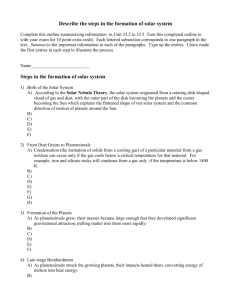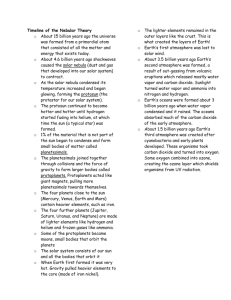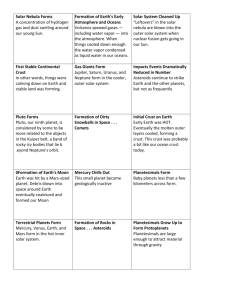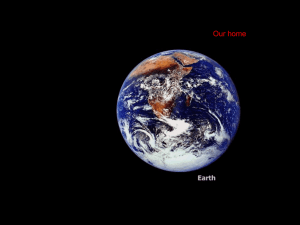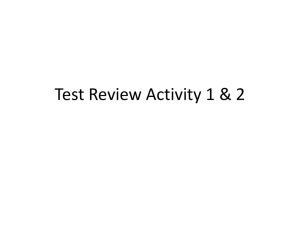Questions regarding the Formation of the Solar System
advertisement
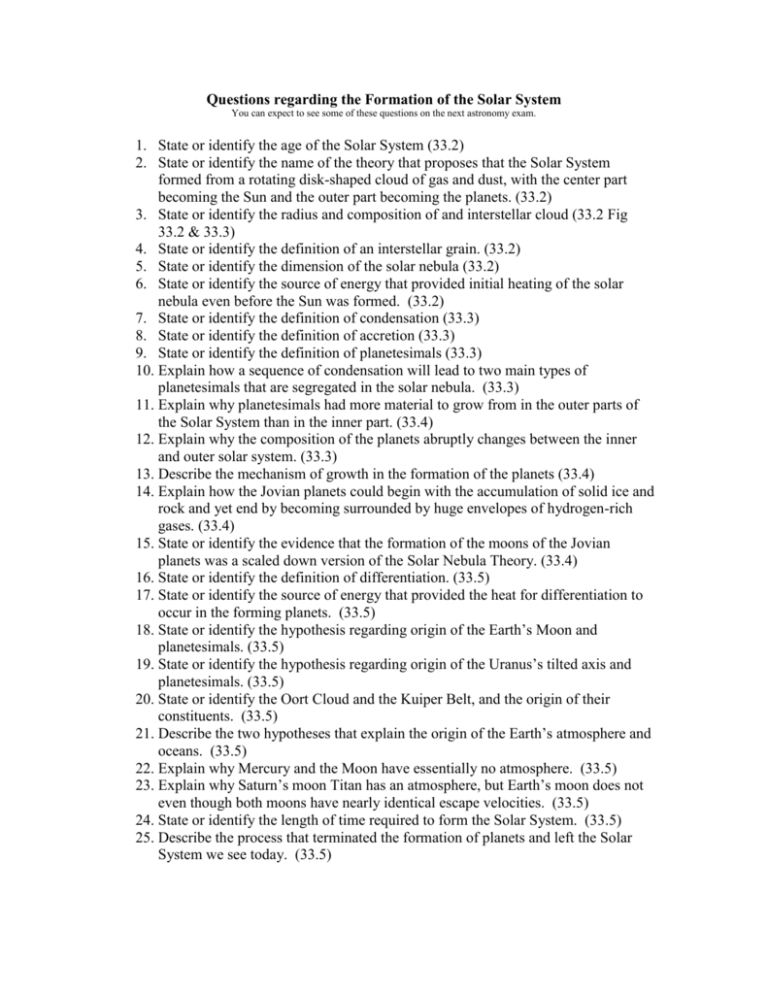
Questions regarding the Formation of the Solar System You can expect to see some of these questions on the next astronomy exam. 1. State or identify the age of the Solar System (33.2) 2. State or identify the name of the theory that proposes that the Solar System formed from a rotating disk-shaped cloud of gas and dust, with the center part becoming the Sun and the outer part becoming the planets. (33.2) 3. State or identify the radius and composition of and interstellar cloud (33.2 Fig 33.2 & 33.3) 4. State or identify the definition of an interstellar grain. (33.2) 5. State or identify the dimension of the solar nebula (33.2) 6. State or identify the source of energy that provided initial heating of the solar nebula even before the Sun was formed. (33.2) 7. State or identify the definition of condensation (33.3) 8. State or identify the definition of accretion (33.3) 9. State or identify the definition of planetesimals (33.3) 10. Explain how a sequence of condensation will lead to two main types of planetesimals that are segregated in the solar nebula. (33.3) 11. Explain why planetesimals had more material to grow from in the outer parts of the Solar System than in the inner part. (33.4) 12. Explain why the composition of the planets abruptly changes between the inner and outer solar system. (33.3) 13. Describe the mechanism of growth in the formation of the planets (33.4) 14. Explain how the Jovian planets could begin with the accumulation of solid ice and rock and yet end by becoming surrounded by huge envelopes of hydrogen-rich gases. (33.4) 15. State or identify the evidence that the formation of the moons of the Jovian planets was a scaled down version of the Solar Nebula Theory. (33.4) 16. State or identify the definition of differentiation. (33.5) 17. State or identify the source of energy that provided the heat for differentiation to occur in the forming planets. (33.5) 18. State or identify the hypothesis regarding origin of the Earth’s Moon and planetesimals. (33.5) 19. State or identify the hypothesis regarding origin of the Uranus’s tilted axis and planetesimals. (33.5) 20. State or identify the Oort Cloud and the Kuiper Belt, and the origin of their constituents. (33.5) 21. Describe the two hypotheses that explain the origin of the Earth’s atmosphere and oceans. (33.5) 22. Explain why Mercury and the Moon have essentially no atmosphere. (33.5) 23. Explain why Saturn’s moon Titan has an atmosphere, but Earth’s moon does not even though both moons have nearly identical escape velocities. (33.5) 24. State or identify the length of time required to form the Solar System. (33.5) 25. Describe the process that terminated the formation of planets and left the Solar System we see today. (33.5)
